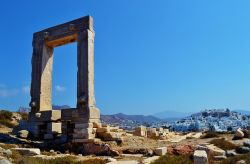The
history of the city begins at 315 BC, from the King of
Macedonia Cassandros, little afterwards the death of
Alexander the Great in
Babylon. Cassandros who was married to Alexander’s sister Thessaloniki, founded the city and gave the city his wife’s name.
Thessaloniki, 150 years after its foundation, is conquered by Romans, as also the entire Macedonia. Macedonians, supporting the Roman sovereignty, face successfully the invasions of northern populations.
becomes also the first city of
Europe, in which Apostle Paul declared the principles of Christianity in 50 AD. In the years to follow, Thessaloniki becomes the seat of Caesar Galerius since 305 AD and in this period most of the magnificent buildings in the city were built as the Arch of Triumph, the Palaces and Rotunda.
Christianity is the official religion when Constantine the Great it selects Thessaloniki as the field of battle of his confrontation with Likinos, which rendered him, triumphed and autocrat. In the following years, Thessaloniki experiences the raids of
Serbians, Goths, Avars, Persians and many more and finally is conquered by the Despot of
Epirus Aggelos Komninos, in 1224. Since 1300 begins a period of acne, with increase of population and strengthening of economy and cultural life. In 1430, Thessaloniki falls in Turks and in the following centuries the city becomes a multinational mosaic, as here is settled Jewish refugees, Turks, Balkans, and the harbour is the most important one for the Ottoman Empire. In the dues of the 19th century, the
Balkan Wars, the city's status was finally settled by the Treaty of Bucharest on August 10, 1913, sealing the city as an integral part of Greece.
Nowadays, Thessalonica is an entire
Byzantine museum. Begin your tour from the
Temple of Saint Dimitrios, the
Twelve Apostles, the Prophet Ilias and Saint Ekaterini, on Olympiadas Str. and the grandiose temple of Saint Sofia (7th century). Important churches are also the Temple of Acheiropiitos and Virgin Mary Chalkeon.

















